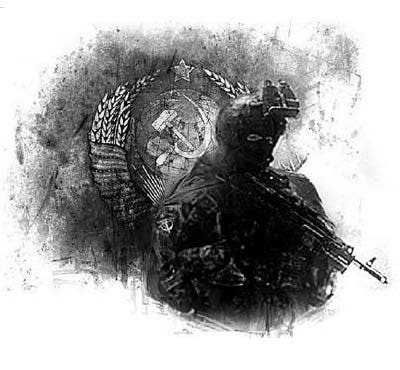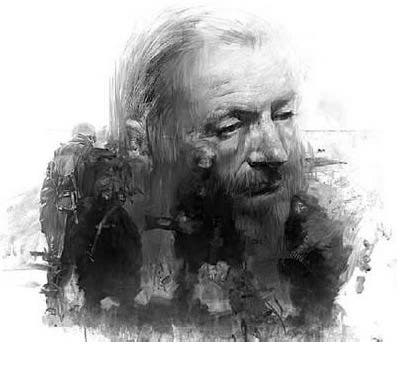The secret stories of Metro
'An empire of myths and legends'.
The station is abandoned, the platform crowned with a mountain of junk. There are books, pieces of furniture, newspapers, broken bicycles, busts of forgotten heroes - objects of the old world, collecting dust. Maybe objects remember too? At this station, people see things. Artyom had a vision of two old men, discussing god and fate, smoking shisha, while a cat lazily napped alongside. Homer saw things the way they were - the platform bustling with commuters in rush-hour, the polished ghost-like carriages gliding along the rails. And Hunter saw himself, or at least a part of himself he'd prefer not to recognise.
This is Polyanka, what is known as the 'Station of Destiny' where lucky travellers are visited by fate or gifted visions. Some believe the tales, but others say there is simply a gas leak at the station, which causes vivid hallucinations - in Metro, reality and mystery are two sides of the same coin. But the story of Polyanka is just one of many that make up the world of Dmitry Gluhkovsky's Metro series - a franchise which grew from a series of books, into three games and an expanded universe. 20 years after the nuclear apocalypse, people now reside in the Moscow Metro, having swapped irradiation on the surface for a far stranger sanctuary below. 'It's an empire of myths and legend' as one of the old men at Polyanka describes it, and all anyone need do is walk the tracks to hear tales of psychics, secret cities, cannibals, giants worms and magic books. The Metro novels are rich in rumour, but some of the crazier stories never found a place in the games, so pull up a pew comrades.

There's the story about demons and communists. In Metro 2033 while visiting the city of Polis, Artyom happens upon a book theorizing that Lenin and the Bolsheviks actually rose to power using the symbol of the pentagram (the Red Star) to contact and strike a deal with 'Demon Lords'. It claims that all those who died in the early years of Communist Russia were sacrifices to those demons, and it's even implied that they manufactured the nuclear apocalypse to reap a great harvest of souls. According to the book, they now inhabit the red stars on the Kremlin's towers, explaining why Stalkers say 'you can't look at the Kremlin' without being hypnotised. What's even more incredible about this, is that it points to the enemies in Metro not being mutants at all, but demons, manifested in our plane of existence by the mass blood sacrifice of a nuclear holocaust - a demon for every red star.
Or how about the tale of the magicians of the Metro? They're humans with the ability to influence and control others, even using their powers to create magical items. Players will of course remember 'the last reincarnation of Genghis Khan' - Khan is a figure who uses his powers to dominate others, as he himself says 'they are jackals, but I am a wolf.' But there are others - the flute player Leonid, who uses his mysterious melodies to enchant large groups of people, at one point even averting an entire massacre. There is also a preacher from the Worm Cult, described as more 'creature' than man, who uses his powers to indoctrinate children, kidnapped from other stations, even going so far as to hypnotize a whole squad of heavily armed Stalkers. These magicians also created magical items such as 'The Guide', a living map which can lead its owner on safe paths through the tunnels, described by Khan as 'the legacy of one of the most powerful magicians of the last era'. There is also 'The Future', the last of three ancient books, with pages 'as black as anthracite'. The Future is a record of history 'to the end' hidden away in the stacks of the Moscow State Library and guarded by the mysterious 'librarians'. In the books Artyom searches for this powerful tome, but just as with so many of the Metro's other stories, the truth of its existence remains a mystery.

Then there are the strange tales that circulate some of the backwater stations. About the Satanists who took up residence in Timiryazevskaya, after a tide of rats swallowed it whole, believing the Metro to be the gateway to hell, and so kidnapping people to dig tunnels for them. Or Nagornaya, the 'living station' which creates a fog with which to hunt the hapless travellers who wander into its halls. Or even the 'kingdom of rats' itself, the 'freezing, stinking labyrinths of horror' where the uncountable rats of the Metro make their dominion.
The books are packed with countless terrifying myths, but perhaps, the most noteworthy of all these are 'The Savage Cannibals of the Great Worm Cult'. Shortly after the missiles fell, the station of Park Pobedy was cut off by a collapsed tunnel, meaning that its residents developed separately to the rest of the Metro. Subject to radiation and without technology to help, many of them were mutated and they even developed their own language, as well as their custom of kidnapping and eating 'the enemies of The Great Worm'. The most interesting part of the story however, is that their deity is actually a fabrication. Their leader, a philosopher and psychologist, reveals he created the worm out of spite for those 'who destroyed the world', an attempt to forge a new humanity, less liable to fall prey to 'the perniciousness of technology'. But the funny part is, in the vast, empty tunnels behind Park Pobedy, Artyom spots something huge, moving in the dark, once again leaving another riddle unsolved.

It's hard to understate the importance that such stories hold in Metro - as a world whose richness relies on fragmented myths and pieces of rumour, but also as untold influences in creating the games. The Worm Cult for example, appear to have many similarities with the technophobic factions of Metro: Exodus, especially 'The Church of the Water Tsar', who also have an enigmatic leader, and worship a giant monster. But while the games, as first person shooters demand realism to function, drawing a line between mystery and reality, the true brilliance of the stories in the books lies in their ability to walk that line. So many of these tales are inconclusive at best, juxtaposing mysticism and realism, so as never to provide the reader with a clear answer. It's hard not to feel like a conspiracy theorist, but it creates a world of untold mysteries, where around every bend in the track, you may find any manner of strange creature or supernatural phenomena. I hope we'll see more stories from the books realised in Metro: Exodus - Polar Dawns power plant? The tank in the country? Maybe even The Brigadier? After all, as one of the old men at Polyanka quite wisely states, in the Metro 'you can't say anything with 100% certainty'.


